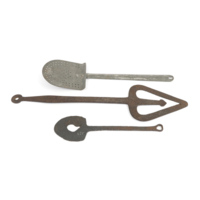B - Ball, carved stone to Beaker



ball, carved stone 19c- n
Small, spherical stone object of unknown use found mainly in NE Scotland, prob made c2500BC.
attached to sticks and used as weapons
J Smith 1876
mounted as mace-heads
Joseph Anderson 1883
moveable poises on primitive weighing machines
L Mann 1914
the same abnormal distribution as the so-called Pictish symbols
V Gordon Childe 1931
thrown competitively from one place to another
E Evans 1957
prestige objects
E MacKie 1976
used at clan conferences, the chief handling it as he considered a judgement
D N Marshall 1977
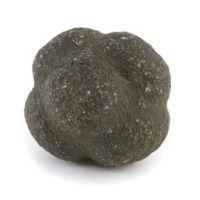
Found in Aboyne, Aberdeenshire.
ABDUA:17799
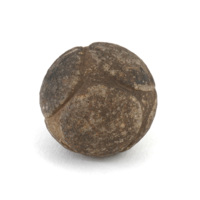
Found in Kemnay, Aberdeenshire.
ABDUA:16289
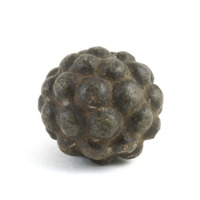
Found in Kildrummy, Aberdeenshire.
ABDUA:14231
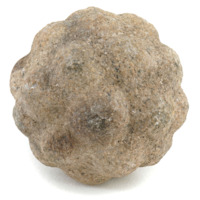
Found in Aberdeenshire.
ABDUA:16316

Found in Insch, Aberdeenshire.
ABDUA:16273

Found in Skelmuir Old Deer, Aberdeenshire.
ABDUA:17806

Found in Towie, Aberdeenshire.
ABDUA:16250
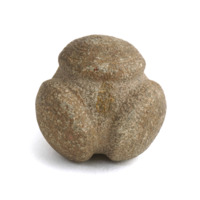
Found in Aberdeenshire.
ABDUA:15673

Found in Fyvie, Aberdeenshire.
ABDUA:17804
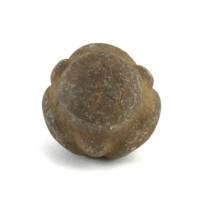
Found in Aberdeenshire.
ABDUA:17800

bannock 17c-, bannok la16c-e17c n
1 A round flat cake, usu of oat-, barley- or pease-meal, baked on a girdle la16c-.
2 A quantity of meal sufficient to make a bannock, due to the servant of a mill from each of those using it la16c-18c.
3 A flat cake (of tallow or wax) la16c-e19c.
~ stane n
A stone placed in the fire, on which bannocks were baked la18c-e20c
[nME bannok, OE bannuc; cfGael bonnach, bannach].
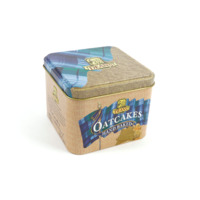
Oatcakes (1990).
LEMUR:1000091
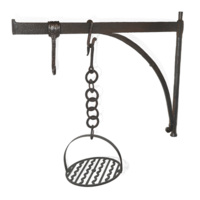
Sway and cruik used to suspend branders, pots etc over the fire from Darnabo, Fyvie (late 18th cent.)
ABDUA:15915
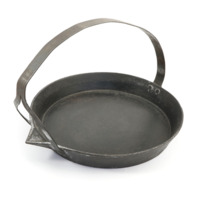
Girdle / frying pan from Darnabo, Fyvie, Aberdeenshire (late 19th - early 20th cent.)
ABDUA:15921

Bannock stane placed in front of the fire to toast 'brandered' bannocks, Sauchenbog, Kildrummy (late 18th cent.)
ABDUA:16317

Beaker n
A large drinking bowl or cup specif a type of prehistoric pottery.
Usually discovered by chance, either during deep ploughing or gravel quarrying careful excavation reveals a fragmentary skeleton, laid on its side with its legs drawn up to the chin, and, lying beside the body, a highly decorated, hand made pot this pot, or beaker, has been commonly used to name the Late Neolithic inhabitants of the Grampian Region (c2700-1700BC).
Ian A.G. Shepherd 1986 Powerful Pots
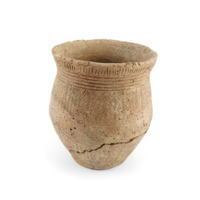
Beaker found in cist with young male skeleton in Auchrynie, Fetterangus, Aberdeenshire.
ABDUA:19744
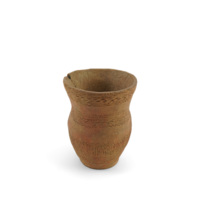
Beaker found at Westside of Brux, Mossat, Aberdeenshire.
ABDUA:19739
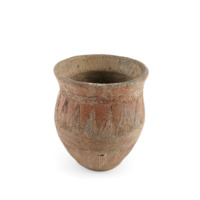
Beaker found in an empty cist on Mill Farm, Rathen, Aberdeenshire.
ABDUA:19738
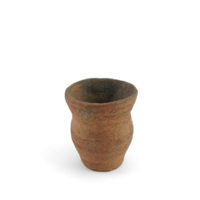
Beaker found in cist on the Hill of Elrick, Newhills, Aberdeenshire.
ABDUA:19696
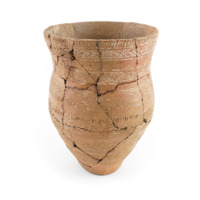
Beaker from cist containing a young male skeleton, strike-a-light, 2 arrowheads, 2 pieces of worked flint, a piece of quartzite and a fragment of a bronze dagger blade in Tavelty, Kintore.
ABDUA:14475

